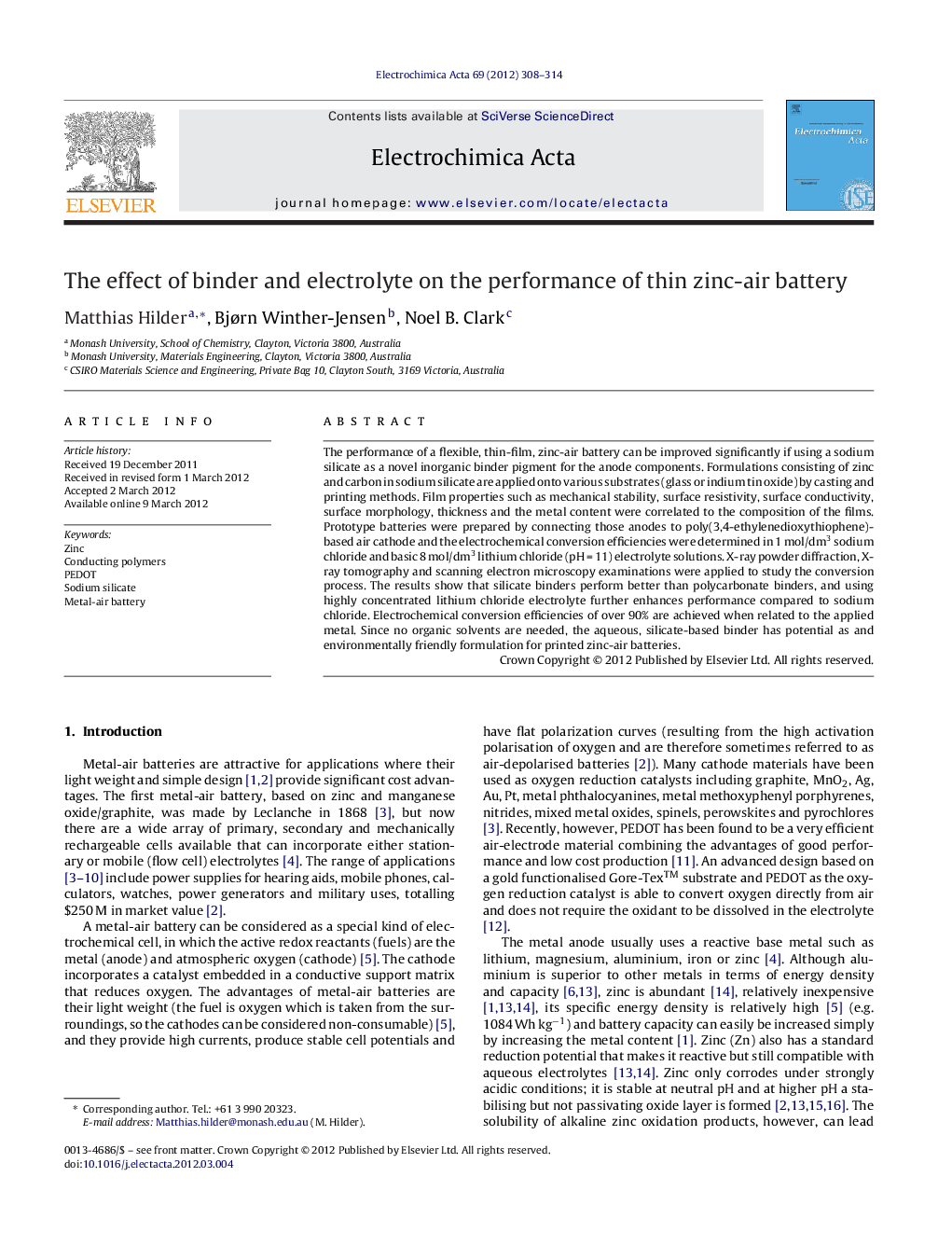| Article ID | Journal | Published Year | Pages | File Type |
|---|---|---|---|---|
| 188759 | Electrochimica Acta | 2012 | 7 Pages |
The performance of a flexible, thin-film, zinc-air battery can be improved significantly if using a sodium silicate as a novel inorganic binder pigment for the anode components. Formulations consisting of zinc and carbon in sodium silicate are applied onto various substrates (glass or indium tin oxide) by casting and printing methods. Film properties such as mechanical stability, surface resistivity, surface conductivity, surface morphology, thickness and the metal content were correlated to the composition of the films. Prototype batteries were prepared by connecting those anodes to poly(3,4-ethylenedioxythiophene)-based air cathode and the electrochemical conversion efficiencies were determined in 1 mol/dm3 sodium chloride and basic 8 mol/dm3 lithium chloride (pH = 11) electrolyte solutions. X-ray powder diffraction, X-ray tomography and scanning electron microscopy examinations were applied to study the conversion process. The results show that silicate binders perform better than polycarbonate binders, and using highly concentrated lithium chloride electrolyte further enhances performance compared to sodium chloride. Electrochemical conversion efficiencies of over 90% are achieved when related to the applied metal. Since no organic solvents are needed, the aqueous, silicate-based binder has potential as and environmentally friendly formulation for printed zinc-air batteries.
